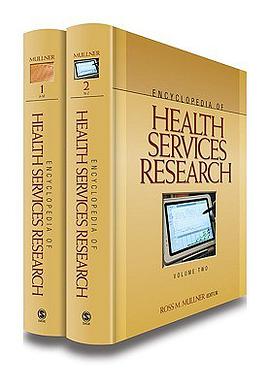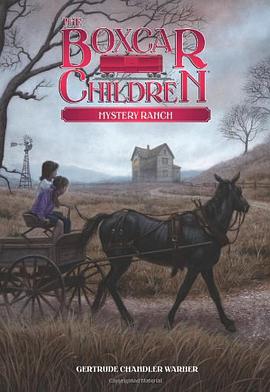

具体描述
The discipline of communication has grown in popularity from the time professors of journalism and speech decided, in the mid-1960s, that the term “communication” was an excellent general descriptor for the theory and research that each group aspired to create. Over time, the two groups grew closer and recognized significant overlap in their theoretical and research interests, but there were also differences in their traditions that kept them apart. While both groups agreed that communication is a practical discipline, journalism professors focused a great deal of their attention on the education of media professionals. Speech professors, on the other hand, often were more oriented to the liberal arts and valued the fact that communication could be approached from a variety of traditions, including the arts, humanities, social sciences, and even the sciences.
A key term in 21st Century communication, however, is convergence. Not only are media and technology converging with each other to produce new means of communicating, but individuals are increasingly using both new and existing communication tools to create new forms of communication. This convergence forces the various “camps” within the communication discipline to draw upon each other’s theories and research methods to keep up with explaining the rapidly changing communication environment. This convergence of ideas and theories provides a space to challenge conventional ways of thinking about the communication discipline, and that’s the goal of the SAGE 21st Century Reference Series volumes on Communication. General Editor William F. Eadie has sought to honor the diversity of the study of communication but also integrate that diversity into a coherent form, dividing communication study into four basic properties: 1) processes, 2) forms and types of communication, 3) characteristics to consider in creating messages, and 4) relationships between communicators.
Via 100 chapters, this 2-volume set (available in both print and electronic formats) highlights the most important topics, issues, questions, and debates any student obtaining a degree in the field of communication ought to have mastered for effectiveness in the 21st Century. The purpose is to provide undergraduate majors with an authoritative reference source that will serve their research needs going forward in this exciting field with more detailed information than encyclopedia entries but not as much jargon, detail or density as a journal article or a research handbook chapter.
Comprehensive coverage captures all the major themes and subfields within communication. For instance, Volume 1 themes include the discipline of communication, approaches to the study of communication, key processes of communication, forms and types of communication, key characteristics of messages, key communication relationships, factors affecting communication, and challenges and opportunities for communication. Themes in Volume 2 are media as communication, communication as a profession, journalism, public relations, advertising, and media management.
Authoritative content is provided by a stellar casts of authors who bring diverse approaches, diverse styles, and different points of view.
Curricular-driven emphasis provides students with initial footholds on topics of interest in researching for term papers, in preparing for GREs, in consulting to determine directions to take in pursuing a senior thesis, graduate degree, career, etc.
Uniform chapter structures make it easy for students to locate key information, with a more-or-less common chapter format of Introduction, Theory, Methods, Applications, Comparisons, Future Directions, Summary, Bibliography & Suggestions for Further Reading, and Cross References.
Availability in print and electronic formats provides students with convenient, easy access.
作者简介
目录信息
52. Deception Tim Levine
28. Genre Karlyn Kohrs Campbell
15. Listening, understanding, and misunderstanding Andrew D. Wolvin
49. Competent and incompetent communication Sherwyn Morreale
26. The interplay of verbal and nonverbal codes Laura Guerrero, Lisa Farinelli
35. Supervisors, subordinates, and co-workers Patrice Buzzanell, Rebecca Weiler
19. Conversation, discourse, and dialogue Robert Agne, Robert Agne, Karen Tracy
27. Rhetorical style Barry Brummett
51. Sexual harassment Debbie S. Dougherty
47. Globalization John Eger
20. Interviewing Charles Stewart
11. Message construction and editing Michael Roloff, Michael Roloff, Courtney Wright
1. Communication as an idea and as an ideal. H. O'Hair, William Eadie
50. Unwanted communication and abuse Brian H Spitzberg
43. Sexual orientation Bettina Heinz
48. Ethical and unethical communication Josina M Makau
18. Relational dynamics and identity management Karla Bergen, Dawn Braithwaite
62. Group decision support systems Marshall Scott Poole
58. Agenda-setting and framing Salma Ghanem, Maxwell McCombs, Gennadiy Chernov
45. Risk Katherine Rowan
64. Professional communication practices Dale Cyphert
46. Freedom of expression Dale Herbeck
33. Friends Kristen Norwood, Steve Duck
10. Feminist and queer studies approaches to communication Bonnie Dow, John Sloop
Memorials and other forms of collective memory Peter Ehrenhaus
89. Advertising creative development and copywriting David Klowden
80. Issues management Robert Heath
81. Campaign design and management Ronald Smith
78. Public relations research Don Stacks, Marcia DiStaso
90. Advertising Media Planning<br> Donald Jugenheimer
97. Media policy, and regulation John Hendricks
82. Crisis communication Kathleen Fearn-Banks
57. Media uses and gratifications CarrieLynn Reinhard, Brenda Dervin
Philosophical approaches to communication James Anderson
Critical/cultural approaches to communication Kent Ono
4. The journalism tradition. John Nerone
Public speaking Amy Slagell
94. International advertising Barbara Mueller
84. International public relations Suman Lee
34. Dating and romantic partners Jennifer Samp, Caren Palevitz
32. Children, parents, and grandparents Michelle Miller-Day, Jennifer Kam
99. Radio and television programming Lynne Gross
73. Journalism ethics Clifford Christians
85. The business of public relations John Stone
24. Visual rhetoric Janis Edwards
23. Conflict management and mediation Linda Putnam
13. Perspective taking, adaptation, and coordination Amy Ebesu Hubbard
77. Theories and effects of public relations Carl Botan, Carl Botan
3. The speech tradition. William Keith
40. Social support networks Erina MacGeorge, Brant Burleson
53. Bias Andrew Cline
14. Social construction, and meaning creation Mariaelena Bartesaghi, Kenneth Cissna
56. Media portrayals and representations James Robinson
86. History of advertising Edd Applegate
41. Gender Julia Wood
16. Performance and storytelling Eric Peterson
93. Social marketing Timothy Edgar, Megan Palame
92. Integrated marketing communication Michael Belch, George Belch
65. History of journalism John Steel
95. The business of advertising Edward Russell
66. The changing nature of “news” Michele Weldon
83. Political communication Sharon Jarvis, Soo-Hye Han
59. Cultivation and media exposure Nancy Signorielli
54. Traditional and new media Rayford Steele
60. Virtual reality and presence Corey Bohil, Charles Owen, Eui Jeong, Alicea Bradly, Biocca Frank
38. Students and teachers Steve Beebe, Timothy Mottet
22. Deliberation, debate, and decision-making James Klumpp
17. Persuasion and social influence Robert Gass, John Seiter
71. Print, broadcast, and new media journalism John Pavlik
97. Media economics and ownership Fang Liu, Alan Albarran
12. Cognition and information processing John Greene, Melanie Morgan
79. Ethics in Public Relations Charles Marsh
69. Magazine and feature writing Edward Friedlander
30. Rhetorical exigency, strategy and argumentation Karyn Rybacki, Donald Rybacki
39. Doctors, patients, and other helping relationships Wayne Beach
76. History and concepts of public relations Glen Broom
44. Culture Fred Jandt
6. Rhetorical and textual approaches to communication Valerie Renegar, Jennifer Malkowski
31. Spouses and other intimate partnerships Laura Stafford
70. Photojournalism James McNay
67. Reporting, story development, and editing K. Wulfemeyer
74. International journalism Sam Mwangi
36. Social groups, workgroups, and teams Kevin Barge
63. Media literacy W. James Potter
61. Computer-mediated communication Lara Lengel
72. Journalism and the law Sandy Davidson
8. Qualitative, ethnographic and performative approaches to communication Dean Scheibel
71 Broadcast Journalism Mark Leff
101. Media convergence Brad Mello
10. Queer Approaches to Communication John Sloop
88. Advertising research Samuel Bradley, Timothy Laubacher
75. The business of journalism Robert Dowling
42. Ethnicity Melbourne Cummings
68. Investigative journalism Hugo de Burgh
29. Dramatic Elements in Messages Edward Appel
· · · · · · (收起)
读后感
评分
评分
评分
评分
用户评价
相关图书
本站所有内容均为互联网搜索引擎提供的公开搜索信息,本站不存储任何数据与内容,任何内容与数据均与本站无关,如有需要请联系相关搜索引擎包括但不限于百度,google,bing,sogou 等
© 2026 book.wenda123.org All Rights Reserved. 图书目录大全 版权所有




















